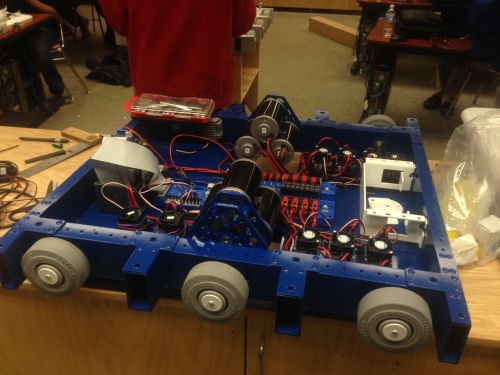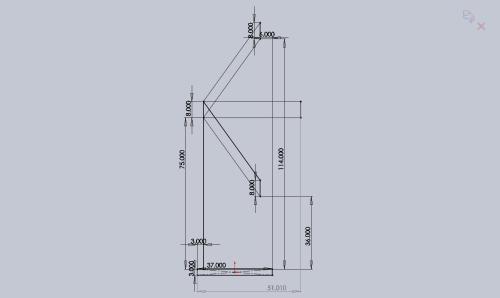I think promises to update regularly are at this point pretty unrealistic. I’ll try more often, but we’ll see what actually happens.
A goalie pole can be approximately modeled as a simple cantilever beam, with the impact of a ball modeled as a point load. To solve for deflection along a beam, one can integrate the moment equation for the beam twice with respect to distance from the support. The case of a cantilevered beam with single point load at the end has already been solved, and the solution is included in essentially any engineering reference text. From this one (PDF warning), deflection at end = (PL^3) / (3EI) . Finding the length is easy enough (I’ll be using 45 inches), as is the Young’s Modulus (E) for any particular material. I is also known; since I will be using round tube the formula is just (pi/12)(r_outer^4 – (r_outer – wall_thickness)^4).
The tricky unknown is P. How much force does a ball impact a goalie pole with? I had to do some sketchy math to come up with an approximate number for this, and it might not be that accurate, but without experimental data there isn’t a ton else I can do. I used impulse-momentum to solve for the impact force. P dt = m v. The mass of a ball is about (2 pounds) / (32.2 ft/s^2) = 0.0621 slug. One of the fastest ball launches I saw this year was from Team 20, who launched a ball at roughly 36 feet per second.
The trickiest part is finding the impulse time (dt). When I was doing the math for this, I was initially expecting to use a polycarbonate tube as the goalie pole. I remembered that at IRI, team 447 had a plastic (PVC?) goalie pole, so I decided to analyze video footage to determine the impulse time. The ball remained in contact with the pole for 2 frames before the pole deflected away from the ball, so let’s say dt is 1/15th of a second.
Now we can solve for the force: F = m v / dt = (.0621 slug) (36 ft / s) / (1/15 s) = ~33.5 lbf. The last variable needed is E. Young’s Modulus for polycarbonate is about 377.1 * 10^3 psi and for aluminum it is about 10.2 * 10^6 psi.
Given these variables, we can write the deflection equation in terms of r for both materials. For polycarbonate of wall thickness .125″, the equation becomes (6 inches) = [(33.5 lb)(45 in)^3]/[3(377.1 * 10^3)(pi/12)(r^4 – (r – .125)^4)] . Using our handy dandy Wolfram Alpha to solve it (I’m pretty lazy), the minimum radius of a polycarbonate goalie pole rigid enough to meet the rules is about 1.57 inches. Unfortunately, 3″ OD polycarbonate is both expensive and too big for the allotted space.
Luckily aluminum gives more promising results. The same equation is used for aluminum, with the bigger Young’s Modulus plugged in. The minimum radius required is r = .5625 inches. This corresponds to a pole of 1-1/8″ OD. I believe a 1″ OD pole would also work just fine, as this is an extreme worst case condition (100% of ball force absorbed by pole, at very tip, from an unusually fast catapult). Hopefully I didn’t make any huge assumptions or math errors; please correct me if I’m wrong!



